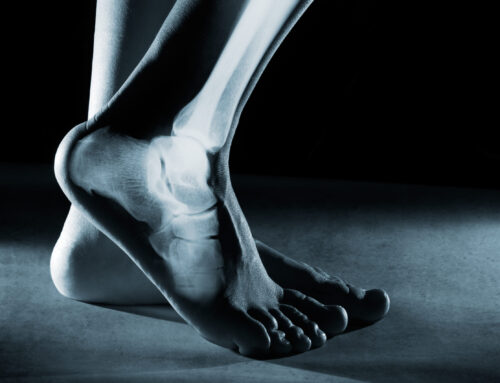From an ankle strain to a grade 3 ankle sprain to a fractured bone in the ankle, an average of two million ankle injuries occur every year in the United States.
While most ankle injuries will heal without needing surgery to correct the problem, some of these injuries are so severe that people might struggle with lifelong issues related to the injury. If you severely injured your ankle, this is when your family medicine provider or podiatrist would decide to send you to a foot and ankle surgeon.
Now that you are preparing for surgery, you may be wondering what the healing process might look like. Keep reading to learn more about what to expect following your Boise ankle surgery.
Immediately After Surgery
You will need to bring someone with you on the day of your surgery because you will not be able to drive yourself home. Plus, your surgeon will give you specific instructions for caring for your ankle after the surgery. You must follow these instructions carefully. Having someone with you to help retain that information is extremely helpful.
In general, you might follow the P.R.I.C.E. model of therapy (like what you would follow for a strain or sprain) that comes into play in those first few days while healing from ankle surgery. The acronym stands for Protect, Rest, Ice, Compression, and Elevation. It’s pretty self-explanatory, but you will want to:
- Use a support to protect the ankle from further injury
- Stay off your ankle while it heals
- Apply ice to the ankle for 15-20 minutes every few hours
- Wear a compression sleeve
- Sit with your foot elevated above your heart
All of this is to reduce the amount of swelling you’ll have and improve how you heal.
Your Boise ankle surgeon will also send you home with a prescription for pain medication to alleviate the pain and antibiotics to stave off potential infections. It’s important to take these medications as directed so that you heal properly.
During this time, you will also want to be wary of the warning signs that could point to serious complications like infections or blood clots. Some of the things to look for that might indicate an infection are:
- Severe pain (untouched by medicine, resting, and elevation)
- Fever (over 101°F) and chills, body aches
- Lymph node tenderness (in the groin area)
- Foul smelling drainage from the incision
Signs that you might be developing a blood clot include severe calf pain, shortness of breath, chest pain, and palpitations.
At the Follow-up Appointment
Depending on the procedure, you will likel;y be non-weightbearing until the follow-up appointment with your surgeon. This means that your healing foot should not touch the ground, even if you are in a cast. You must go to the follow-up appointment because your surgeon will examine your ankle and determine the next steps towards recovery.
Attending this appointment is also important to keep in the event that you need to have stitches removed (unless you had dissolvable stitches).
The Recovery Timeline
There is a lot of work to be done while recovering from ankle surgery in order to return back to your normal life. Maybe you had to take time off work, you have regular PT sessions, and you haven’t been able to wear your favorite shoes in quite a while.
The amount of time you will spend healing from surgery depends on the type of surgery that your ankle surgeon performs (including ankle fracture surgery, ankle reconstruction, or ankle arthroscopy).
It also depends on your age and general health, how well you listen to the doctor’s orders, and the risk of infections or blood clots. The entire process can take from six to eight weeks to more than a year.
Hang in there for a little while longer because the work that you are putting into your recovery is going to pay off when you no longer have to deal with the pain of your ankle injury.
Physical Therapy and Rehabilitation
Physical therapy might be necessary to prevent post-op complications, such as scar tissue buildup, loss of strength, flexibility or motor skills, blood clots, and swelling or inflammation. Your doctor will recommend either stretches and exercises that you can do from home or refer you to a physical therapist to work through these exercises with you (for more severe injuries).
Going Back to Work
Since the first two weeks following surgery requires a lot of rest, you may not be able to return to work before your follow-up appointment.
If you have an office job (and can get reasonable accommodation for resting and elevating your leg), you might be able to return to sooner than if you have a job that requires a lot of standing or walking. If your job does require you to stand for long periods of time, you might not be able to return to work until your leg is fully healed.
Wearing Normal Shoes
Swelling and inflammation (and a cast, if you need one) are going to prevent you from wearing shoes on the injured foot for several weeks.
While returning to normal shoes as soon as possible is preferable, you might spend a few weeks in a walking boot after getting your cast removed. You may have to slowly transition into wearing comfortable sneakers before moving on to sandals, slides, or other footware (after you fully healed).
Dealing With Pain
In the aftermath of your surgery, you shouldn’t have to deal with pain in the long term.
During the surgery, your surgeon may place metal plates and screws into your ankle to keep the bones stable while they heal. Most people live the rest of their lives with the hardware in place. However, if you have residual pain from the hardware, your surgeon might even opt to remove them once your ankle is completely healed (around 12 months after the initial surgery).
Life After Boise Ankle Surgery
Life after ankle surgery deals with a balance of rest and exercise to get back to normal, especially when your mobility has been greatly impacted by the injury. Soon enough, you will be able to return to your normal daily activities when you follow your surgeon’s plan for recovery.
Contact the Flint Foot & Ankle Institute for more information on recovering from your upcoming Boise ankle surgery. We will be happy to answer any questions that you might have before and after the procedure.




